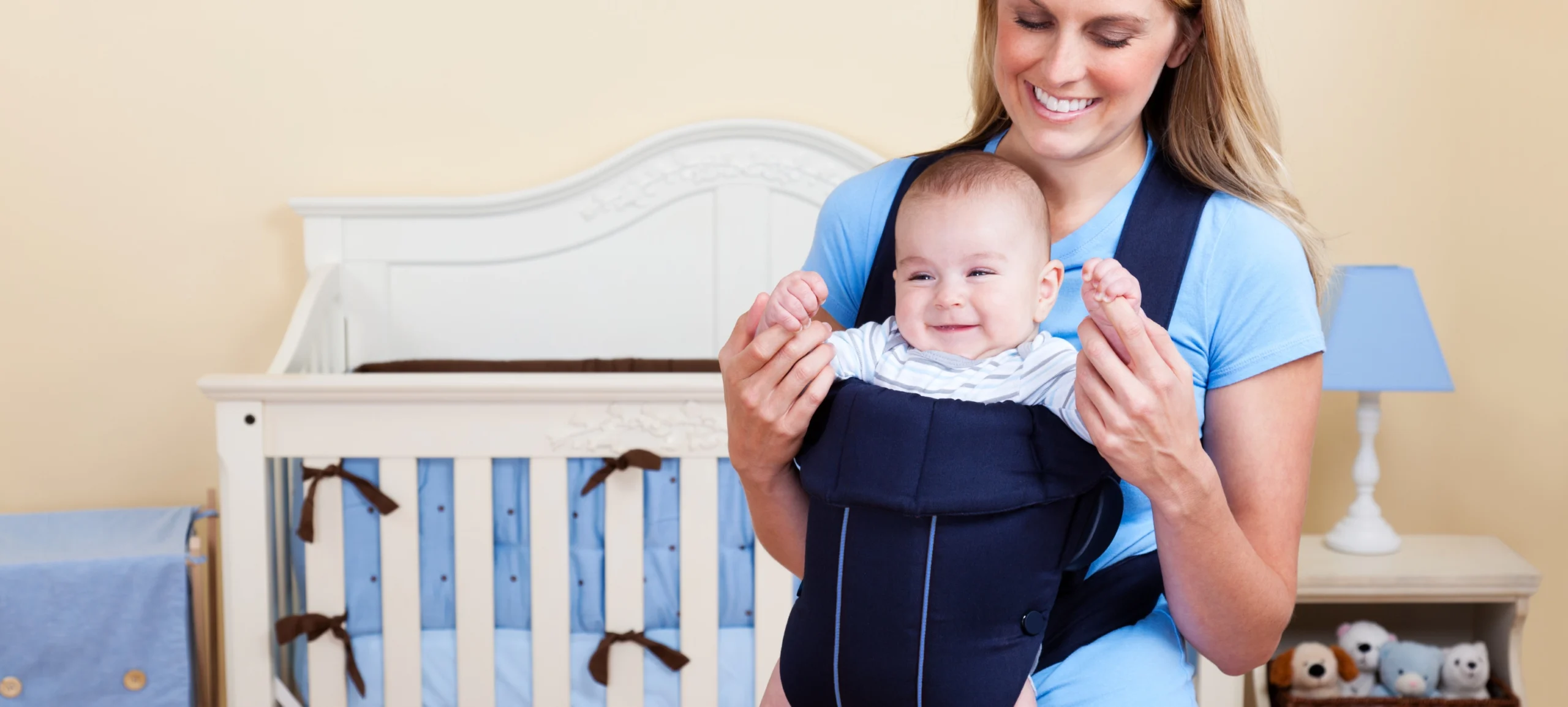Baby-wearing is a practice that has been used for centuries across cultures, and it’s no surprise why—it offers a multitude of benefits for both parents and babies. From enhancing the bond between parent and child to making everyday tasks easier, baby-wearing is a practical and nurturing way to care for your little one. But with so many types of carriers available, choosing the right one can be overwhelming. In this article, we’ll explore the benefits of baby-wearing and provide helpful tips on how to select the perfect carrier for your needs.
The Benefits of Baby-wearing
- Promotes Bonding and Attachment Baby-wearing helps to strengthen the emotional bond between parent and baby. Keeping your baby close provides comfort and security, while also fostering a sense of trust. The physical closeness allows your baby to hear your heartbeat, feel your warmth, and sense your movements, all of which are comforting and reassuring. This kind of bonding is essential for your baby’s emotional development and can help reduce stress for both you and your little one.
- Supports Healthy Physical Development Wearing your baby offers several physical benefits, including improved posture, balance, and muscle development for both parent and child. For babies, being carried helps promote proper hip development, especially when using a carrier that supports the legs in an “M” position. This posture is important for the development of the hip joints and can help prevent conditions like hip dysplasia. Additionally, the gentle motion of baby-wearing can help soothe and calm fussy babies.
- Provides Hands-Free Convenience One of the most significant advantages of baby-wearing is the freedom it gives you to be hands-free while keeping your baby close. Whether you’re cooking, cleaning, running errands, or simply going for a walk, baby-wearing allows you to keep your baby secure and comfortable while still being able to complete tasks. This is especially helpful for parents with older children or those trying to juggle multiple responsibilities.
- Reduces Crying and Promotes Better Sleep Studies have shown that babies who are worn in carriers tend to cry less. The closeness and movement provided by baby-wearing can help calm babies, making them feel more secure and less likely to cry. Additionally, baby-wearing can help promote better sleep by providing a soothing, rocking motion that lulls your baby to rest. Many parents find that baby-wearing is especially helpful for naps, as babies tend to sleep more soundly when close to their caregivers.
- Encourages Social Interaction When your baby is worn, they’re at the perfect height to observe the world around them. This encourages social interaction with others and allows them to engage with their environment. Baby-wearing also gives your baby a sense of connection to the people around them, which is beneficial for their cognitive and emotional development.
- Supports Breastfeeding Baby-wearing can make breastfeeding more convenient, especially in public or while on the go. Many baby carriers are designed to allow you to nurse discreetly while your baby is securely positioned in the carrier. This can make breastfeeding easier for moms who need to feed their babies while out and about.
How to Choose the Right Baby Carrier
With so many options available, choosing the right baby carrier can feel overwhelming. Here are some important factors to consider when selecting the perfect carrier for you and your baby:
- Age and Size of Your Baby The age and size of your baby should be the first consideration when choosing a carrier. Newborns need carriers that provide full support for their heads, necks, and spines. Look for a carrier that offers a reclined position or a soft structure that can safely support your baby’s delicate body. For older babies, you may want a carrier that can be adjusted to accommodate their growing size and allow for a variety of carrying positions.
- Comfort for You and Baby Comfort is key for both you and your baby. For your baby, ensure that the carrier supports their legs in a natural “M” position, which promotes healthy hip development. Look for a carrier with padded straps and a supportive waist belt to distribute the weight evenly, making it easier on your back and shoulders. If you plan to wear your baby for extended periods, make sure the carrier provides proper ergonomic support to avoid strain.
- Carrying Positions Consider the carrying positions that suit your needs. Many carriers offer multiple positions, including front-facing, side-carry, or back-carry options. Newborns and smaller babies generally feel more secure in a front-facing position, while older babies may enjoy being carried on your back for better visibility and comfort. Make sure the carrier you choose allows for the positions you prefer.
- Ease of Use Ease of use is another important factor to consider. Some carriers are quick to put on and adjust, while others may require more effort. If you’re looking for a carrier that you can easily put on and take off by yourself, look for one with simple, adjustable straps and buckles. A carrier that can be used without assistance can be particularly helpful for parents who are on the go.
- Material and Breathability The material of the carrier is an essential factor, especially for warmer climates. Look for breathable fabrics, like cotton or mesh, that will keep both you and your baby cool and comfortable. If you’re planning to use the carrier in different weather conditions, consider a carrier that’s suitable for both warm and cold climates, or invest in accessories like sunshades or rain covers.
- Safety and Support Always prioritise safety when choosing a baby carrier. Make sure the carrier is designed to keep your baby secure and that it meets safety standards. Avoid carriers that don’t provide adequate neck and head support for young infants, and always ensure that the carrier is worn correctly, with your baby’s airways unobstructed and their face visible at all times.
- Lifestyle and Activity Level Consider your lifestyle when choosing a carrier. If you’re an active parent who enjoys hiking, you might want a more structured carrier with extra padding and support for long treks. On the other hand, if you’re looking for a lightweight, portable option for everyday use, a simple wrap or soft-structured carrier might be a better fit.
Conclusion
Baby-wearing offers a multitude of benefits for both parents and babies, from fostering a deeper emotional bond to providing convenience and comfort. With so many options available, it’s important to choose a carrier that suits your baby’s needs, your lifestyle, and your comfort level. Whether you’re out for a walk or tackling household tasks, Baby-wearing allows you to keep your baby close while maintaining your hands-free freedom. Choose wisely, and enjoy the closeness and connection that Baby-wearing provides!
We understand that there are many aspects that encompass a Mother, Father or Child and strive toward providing resources and services that accommodates this.
Our content is aimed to inform and educate families on issues starting from pregnancy through to the challenges of the teen-age years.
- Tiny Toons Looniversity Returns: Meet the Voice Behind Plucky and Hamton! - December 12, 2025
- From Pain to Possibility: Panado®’s New Marketing Campaign, Highlights The Joy Of Pain Relief - December 10, 2025
- Feeding Unicorns by Jeni-Anne Campbell: A bold new book for business leaders who care - December 9, 2025






1 thought on “Baby-wearing Benefits and How to Choose the Right Carrier”
I love carrying my baby in her carrier it definitely benefits bonding time, but my oh my I only know now about the benefits. love the parenting hub news letters and articles.